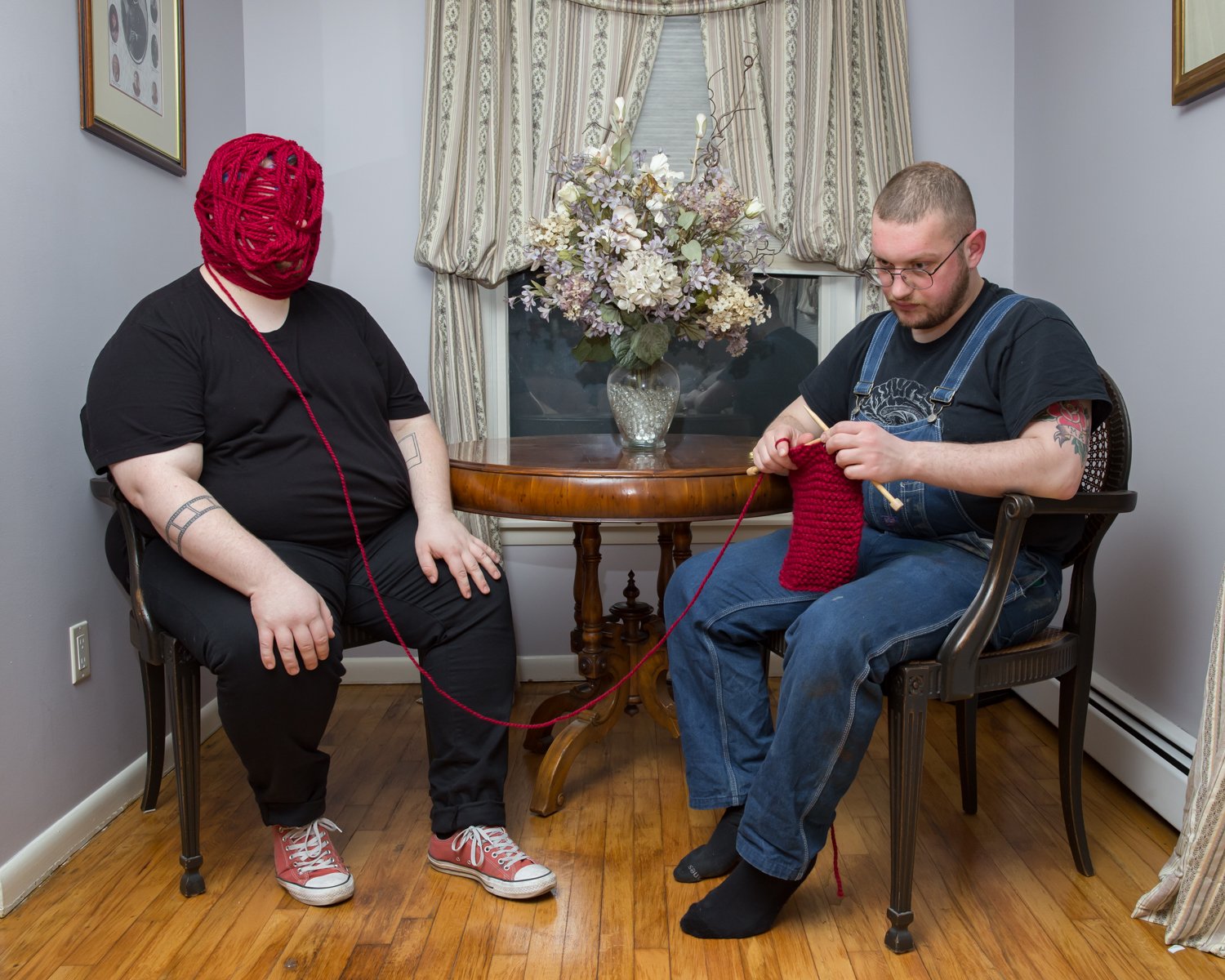Disidentifications by Jesse Egner
Issue 173
“No Femmes. No Fats.” When I started making profiles on gay dating/hookup apps as a teenager, this is a phrase I came across frequently, defining me and my body as unwelcome. As a queer person with a non-normative body and an invisible disability, the constant rejection from gay communities set in motion a battle between my queerness and the body I inhabit.
This work began with self-portraiture—an action that felt aggressive towards myself due to my aversion to it as a practice, perhaps through years of conditioning to despise my appearance. However, it allowed me to begin a visual exploration into non-normative queerness through the utilization of elements such as absurdity, humor, and the uncanny. I eventually moved on from just self-portraiture and began photographing with other queer people in a collaborative process which allowed other narratives and experiences to influence my work. This collaborative process became an integral part of my work, with me often appearing in the photograph with my subjects, where we experiment and explore together through the images we create. These photographs not only establish a space of queer collaboration and play, but also offer a counter narrative to the normative sexualized gaze of contemporary queer photography.
While I am based in New York City, my work pushes against metronormativity—the idea that queer people must live in large cities and urban areas in order to be themselves. Metronormativity looks down on rural and non-urban communities as toxic and damaging to queer people when these individuals may not have the means nor the desire to leave. Furthermore, rural and non-urban areas are often homes to thriving tight-knit queer communities that are often overlooked. By traveling to create this work, I am able to show appreciation and offer representation for these ignored and under appreciated queer communities.
My photographs neither describe nor ascribe. They do not offer complete or concrete narratives of identity. Rather, they present uncertain and fragmented narratives that exist in a space between reality and fantasy, reflecting the transitional space(s) in which queerness exists. Queerness is embodied through the unaffixed elements of fluidity, playfulness, and ambiguity. When I take photographs, the process is spontaneous and collaborative—not unlike the practice of free-association—and echos the fluidity and dynamism of non- normative queer identities.
Jesse Egner (he/him/they/them) lives and works in Brooklyn, New York, USA.
jesseegner.com | @jesseegner
Knit Face, 2019
Daddy Straw, 2019
Lite Brite, 2021
Corgis, 2019
Green Screen, 2022
Dom, 2022
Grindr Face, 2018
Broken Chair, 2021
Bouquet, 2022
Ouija Board, 2020
Baguette, 2022
David, in His RV, 2022
Unicycle, 2023
Affiche, 2022
Ski Mask, 2022
Peek, 2023
Mermaid Tail, 2022
Val, at Bishop’s Beach, 2022



















